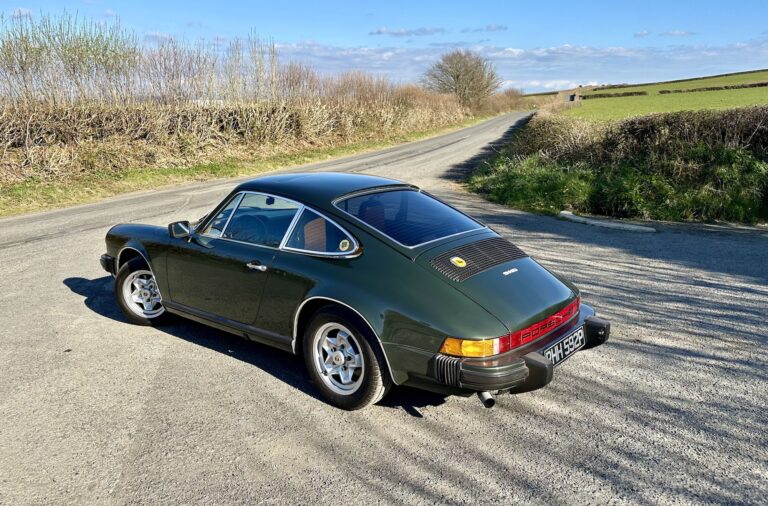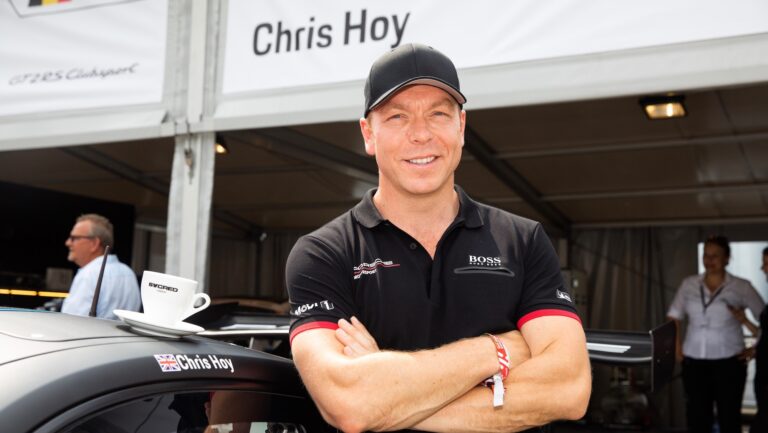Porsche 964 Carrera buyer’s guide
9WERKS presents everything you need to know for the Porsche 964 Carrera derivatives from 1989-1994
Why should you buy one?
Bursting with air-cooled character, the 964 Carrera offers a brilliant blend of everyday civility and old-school driving fun. It’s the archetypal modern classic.
Porsche 964 Carrera: the key facts
Introduced in 1989, the 964-generation marked the first big change to the Porsche 911 in nearly 15 years. Claimed to be ’87 per cent new’ over the outgoing 3.2 Carrera, then-CEO, Heinz Branitski, declared the 964 as “the 911 of the next 25 years.” It introduced a raft of new technology and breathed new life into the ageing G-series model lineup, though many purists rejected this at the time as technological overload.
Today a 964 is revered as the sweet spot in the 911’s lineage, delivering a classic Porsche 911 experience while benefitting from some choice modern comforts. Indeed, this has made the car attractive for backdate projects, with Singer Vehicle Design’s ‘reimaginings’ being the most well-known cases in point. As a result, numbers have dwindled, pushing up values, and so the once-unloved 964 is now highly sought after today.
In all, 63,762 example of Porsche 964 were produced in the five years from 1989-1994, encompassing Turbo, Carrera, Cabriolet, Targa and RS versions.
Today a 964 is revered as the sweet spot in the 911’s lineage, delivering a classic Porsche 911 experience while benefitting from some choice modern comforts. Indeed, this has made the car attractive for backdate projects, with Singer Vehicle Design’s ‘reimaginings’ being the most well-known cases in point. As a result, numbers have dwindled, pushing up values, and so the once-unloved 964 is now highly sought after today.
In all, 63,762 example of Porsche 964 were produced in the five years from 1989-1994, encompassing Turbo, Carrera, Cabriolet, Targa and RS versions.
Categories
How does the 964 Carrera drive?
With coil-sprung suspension, power steering and ABS – plus the new options of four-wheel drive (developed on the 959) and a Tiptronic transmission – the 964 was more revolutionary than it looked. Light controls and sure-footed handling make it easier to drive than a ‘classic’ (pre-1989) 911, but it’s still a vivid contrast to a modern car.
Renowned 964 expert Ian Harris at Harris Classics praises the Porsche’s “analogue feel” and compact dimensions, which make it “right-sized for driving on country roads”. He’s also a fan of the “proper manual gearbox” fitted to the majority of cars.
The 964 combines ease of use with an immersive driving experience, making it a great 911 for touring holidays. Its gruff, air-cooled engine sounds fantastic, with eager throttle response and a keen hunger for revs, while the chassis serves up plentiful poise and grip. The Carrera 4 is more prone to understeer, but Ian says the difference shouldn’t be a deal-breaker.
Porsche 964 Carrera: evolution of tech
Highlighting its claim that the 964 was ‘87 percent new’, Porsche launched the Carrera 4 first. It debuted in January 1989, with a coupe body, five-speed manual gearbox and 16-inch ‘Design 90’ alloy wheels. The full-time, four-wheel-drive system used computer-controlled clutches and three differentials to distribute 69 percent of torque to the rear wheels.
Thanks to integrated bumpers, an engine undertray and an active rear spoiler (which deployed above 50mph, then retracted again below 6mph), the 964 was more aerodynamic than any 911 so far, too.
The Carrera 2 coupe followed later in 1990, along with Targa and Cabriolet body styles. The C2 used the same 250hp M64 flat-six as its C4 sibling, but was 100kg lighter and fractionally quicker to 62mph. Unlike the more sophisticated 993, the Targa still uses a removable roof panel that fits in the front boot – so long as you aren’t carrying bulky luggage, of course. The 964 Cabriolet has an electric hood that folds down in about 20 seconds.
From January 1990, the four-speed Tiptronic auto was offered on the C2, with two pedals and push/pull shifts via the gear lever. Despite being well-received at the time, it is less desirable than a manual ’box today.
By 1991, Porsche had acknowledged the 964’s well-documented problem with oil leaks and introduced a redesigned cylinder head and gasket. A sturdier dual-mass flywheel from LUK was added soon afterwards, replacing the troublesome Freudenberg part on early cars.
Turbo-look versions of the Carrera 2 Coupe and Cabriolet joined the range in late 1991, while the ‘30 Jahre’ 964 Anniversary combined the widebody style with C4 running gear, a plush interior and special paint in 1993.
Harris notes stronger head studs were also introduced from 1993, increasing the engine’s longevity. The final 964 Carrera left Zuffenhausen in August 1994.
What to look for when buying a 964 Carrera
“These cars aren’t cheap to run,” warns Ian Harris, “and the two major things to worry about are the engine and bodywork.”
Starting with the engine, cylinder head studs (as noted above) are a major weakness. If they break, expect oil leaks, rough running and a hefty bill. “A 964 will need a top-end rebuild somewhere between 80,000 and 120,000 miles,” Harris says. Buying a car that’s already had this work done could save you £10,000. At the very least, get the engine compression-tested to reveal any leaks. Electrical relays can often fail, and so many 964 owners carry a spare or two in the glove box just in case.
Like many cars of this era, the 964 is prone to rust. Check where the front and rear wings join the bumpers, and on the scuttle panel beneath the windscreen. “A few small blisters here could point to more trouble underneath.” With the car on ramps, you can also examine the chassis and suspension mounts, although Ian advises getting a professional to do the job. Mismatched paint, poor panel fit or doors that don’t close smoothly could point to accident damage.
Ian says an HPI check is essential for any used 964: “Values plummeted in the late 1990s and early 2000s, so quite a few were written off. This needn’t rule a car out if repairs were done properly, but it will affect its value.” Likewise, many 964s will have gaps in their service history from around this period. This is excusable, says Ian, so long as more recent paperwork is meticulous and comprehensive.
Brakes and suspension are both robust (the latter can be swapped for a Bilstein or KW kit to improve the ride), while interior trim is quite hard-wearing. However, problems with the complex heating system are commonplace. Porsche made continuous improvements throughout the 964’s life, so general advice is to buy the latest car you can.
Porsche 964 Carrera: the options worth having
Rare or unique paint-to-sample colours
These are always sought-after and command a price premium. Red cars tend to fetch less.
Sports seats
The same ‘tombstone’ shape, but with deeper bolsters for a snug fit
Cup alloys and teardrop mirrors
Some prefer this look, swapping the D90 wheels and ‘flag’ mirrors of earlier cars
Air conditioning
This may be retro-fitted, as few 964s had the option when new
Porsche 964 Carrera: factory technical specification
Years produced: 1989-1993
Engine: Flat-six, 3,600cc, naturally aspirated
Power: 250hp @ 6,100rpm
Torque: 310Nm @ 4,800rpm
Compression ratio: 11.3:1
Transmission: 5 speed manual, 4-speed Tiptronic auto
Suspension
Front: MacPherson struts
Rear: MacPherson struts, semi-trailing arms
Wheels and tyres
Front: 6×16-inch; 205/55/ZR16
Rear: 8×16-inch; 225/50/ZR16
Brakes
Front: 298mm discs
Rear: 299mm discs
Length: 4,250mm
Width: 1,652mm
Weight: 1,350kg (C2), 1,450kg (C4)
0-62mph: 5.6 sec (C2), 5.7 sec (C4)
Top speed: 162mph






















